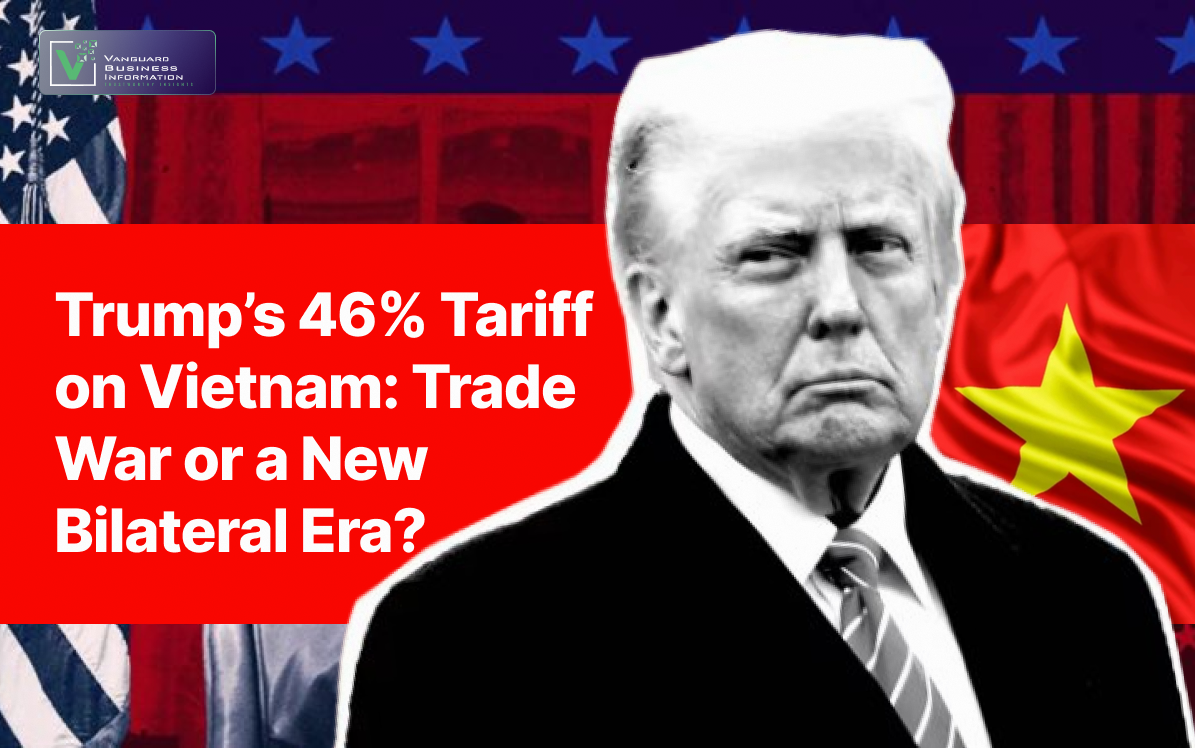Published Apr 2025
Trump’s 46% Tariff on Vietnam: Trade War or a New Bilateral Era?
In a bold move that’s shaking global markets, President Trump’s 46% tariff on Vietnamese goods has sparked both controversy and diplomacy. While the unexpected tax threatens to disrupt one of Southeast Asia’s fastest-growing trade relationships, a high-level call between Trump and Vietnam’s General Secretary Tô Lâm signals hope for resolution. This article dives deep into the roots of the trade imbalance, the political strategy behind the tariffs, and Vietnam’s seven-step plan to navigate the storm—and possibly, pave the way for a historic bilateral trade agreement.

Overview: A Shock to Global Trade, A Test for Bilateral Ties
On April 2, 2025, President Donald J. Trump announced sweeping tariff measures: a blanket 10% tariff on all imported goods entering the U.S. from around the world, and higher retaliatory tariffs of up to 50% on selected countries with high trade surpluses. Among the most affected was Vietnam, hit with a 46% tariff, one of the highest globally.
The announcement sent ripples across international markets and raised immediate concerns in Hanoi. Vietnam, one of America’s fastest-growing trade partners and a rising manufacturing hub, saw its economic model suddenly at risk.
U.S.-Vietnam Trade: From Booming Ties to a Major Deficit
In 2024, U.S. imports from Vietnam reached $136.6 billion, while exports to Vietnam totaled just $13.1 billion. This $123.5 billion trade deficit put Vietnam among the countries with the largest imbalances in goods trade with the U.S.
Despite this imbalance, Vietnam has been considered a strategic partner in the Indo-Pacific region. It is not a direct competitor to U.S. industries, but rather a key part of the global supply chain. Vietnamese exports often complement rather than displace American goods.
April 4 Phone Call: Diplomacy in Action
On the evening of April 4, 2025, General Secretary To Lam held a phone call with President Trump to discuss the state of U.S.-Vietnam relations. Both leaders affirmed their desire to strengthen bilateral ties for the benefit of their countries and to contribute to regional and global peace and development.
General Secretary To Lam emphasized Vietnam's willingness to negotiate a bilateral trade agreement. He expressed readiness to reduce tariffs on U.S. goods to 0% and proposed that the U.S. consider applying the same for Vietnamese exports.
President Trump described the call as "very constructive," acknowledging Vietnam's proposal and openness to further engagement. Both sides agreed to work toward a bilateral trade agreement to formalize their shared commitments. President Trump accepted an invitation to visit Vietnam in the near future, further signaling the importance of the relationship.
Business Reactions: AmCham Voices Concern
Also on April 4, the American Chamber of Commerce in Vietnam (AmCham) released a statement warning of the multi-faceted consequences of the U.S. tariffs on Vietnamese goods. AmCham emphasized that such high retaliatory tariffs contradict the principles of free and fair trade that both nations have long supported.
According to AmCham, the sudden and sweeping nature of the tariffs introduces significant instability and uncertainty for U.S. businesses operating in or sourcing from Vietnam. These include major brands in sectors like footwear, apparel, electronics, and furniture.
Vietnam’s Strategic Response: Dialogue and Diversification
Vietnam's Ministry of Industry and Trade has outlined a seven-point strategy in response to the tariffs:
- Maximize the utility of Vietnam's 17 existing FTAs with over 60 countries.
- Expand negotiations for new trade deals with the Middle East, Latin America, and Central Asia.
- Boost logistics and streamline trade facilitation.
- Support Vietnamese exporters in adapting to market trends.
- Enhance legal defense against anti-dumping and countervailing duties.
- Strengthen Vietnam’s overseas trade offices.
- Restructure the economy toward green growth, innovation, and self-reliance.
Market Impact and International Reactions
The news of the tariffs caused turmoil in global markets. The S&P 500 plunged, and companies like Nike, which rely heavily on Vietnamese manufacturing, saw stock values drop. Internationally, countries including China and EU members criticized the move as disruptive and protectionist.
Analysts interpret the tariffs as part of a broader Trump strategy to reroute global supply chains, weaken China's export dominance, and pressure allies like Europe to concede to "America First" trade standards.
Conclusion: Crossroads or Opportunity?
The 46% tariff on Vietnamese goods may appear punitive, but the rapid diplomatic engagement following its announcement suggests that both countries are committed to avoiding escalation. The phone call between To Lam and Trump, combined with Vietnam's strategic readiness and business community input, could lay the groundwork for a historic U.S.-Vietnam bilateral trade agreement.
In the face of global uncertainty, Vietnam is positioning itself not only as a resilient export economy but also as a proactive and dependable partner in international trade.
Written by Jimmy Le
Vanguard Business Information LLC















